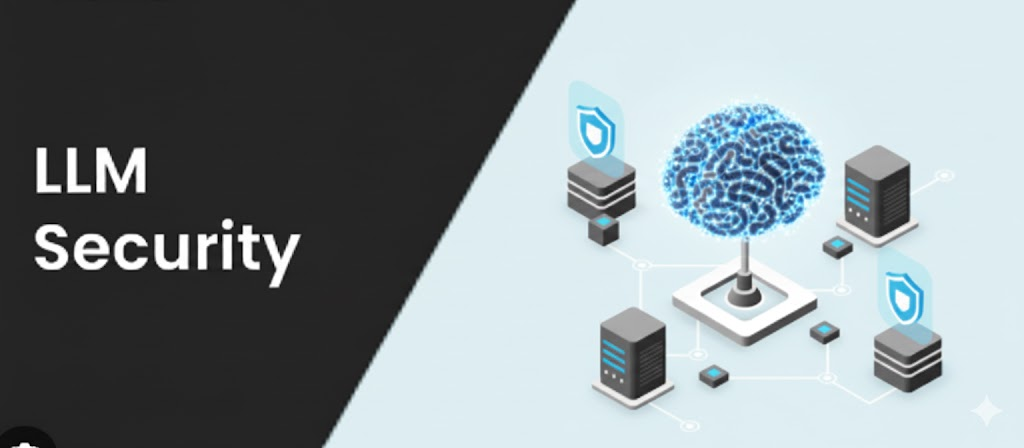Why security engineers even ask “is GetIntoPC safe”
If you work in security, red teaming, malware analysis, exploit research, or AI-driven automated testing, you’ve heard this question in Slack:
“I just need X tool fast. Is GetIntoPC safe or not?”
GetIntoPC (and clones like GetIntoPC.com / GetIntoPC[.]xyz / rehost mirrors) positions itself as a one-stop “free software” archive. Users download installers for Windows, reverse-engineering tools, video editors, licensed enterprise apps, even full OS ISOs. The pitch is speed, convenience, and no paywall.
Here’s the uncomfortable reality:
- The site offers cracked / pre-activated / repackaged commercial software outside the vendor’s license channel. That’s software piracy, which has obvious IP and compliance liabilities for companies under US/EU law. (Bhetal)
- Multiple community and vendor security discussions describe GetIntoPC as high-risk for bundled malware, credential-stealing payloads, backdoored keygens, and trojanized installers. Some reports explicitly link GetIntoPC downloads to account compromise, credential theft, and full machine rebuilds. (Reddit)
- Anti-malware and DFIR communities consider these ecosystems indistinguishable from warez distribution — which is historically a hotbed for trojans, infostealers, and loader frameworks. (Kaspersky Support Forum)
So when you ask “is GetIntoPC safe,” you’re not really asking about one site’s brand reputation. You’re asking, “Do I want to import unaudited, unsigned, potentially modified binaries from an anonymous distributor into my working environment (laptop, lab, client network, or cloud VM) and take legal responsibility for that decision?”
For most orgs, the correct answer is: absolutely not.

Threat model breakdown: what you’re actually pulling into your environment
Let’s walk through the real attack surface behind “free, pre-activated” downloads. We’ll break it into four categories: malware risk, supply-chain trust, legal exposure, and operational blast radius.
Embedded malware and credential theft
There are public claims from both end users and AV communities that GetIntoPC downloads ship with trojans, credential stealers, and background scripts that exfiltrate browser sessions, Google account logins, or license tokens. In some cases, victims report losing access to accounts shortly after installing cracked builds from this ecosystem and having to fully reinstall Windows to recover control. (Reddit)
This aligns with what DFIR teams already know: cracked installers are a near-perfect delivery vehicle because the victim willingly grants admin privileges and whitelists the binary as “productivity software,” not “malware.” (Super User)
Mutated installers (“pre-activated,” “no setup needed”)
When a site says the download is “pre-activated,” “pre-cracked,” or “portable no-install,” what that usually means is:
- License checks are patched out.
- Telemetry and update calls are blocked or rerouted.
- Additional binaries are injected (loaders, auto-run schedulers, persistence hooks).
You are trusting an unknown third party more than you trust the original vendor. That is classic supply-chain compromise risk: you’re executing unsigned code from an actor whose incentives you cannot verify. AV vendors and security forums explicitly warn that download portals distributing warez operate with a “use at your own risk” posture because malicious tampering is common and the chain of custody is opaque. (Kaspersky Support Forum)
Legal and compliance exposure
Cracked commercial software is unlicensed software. In US and EU jurisdictions, knowingly using pirated software in a business setting exposes you to civil penalties, contract breach, potential regulatory headaches (especially for publicly traded or audited entities), and insurance conflicts. (Bhetal)
From a compliance lens:
- If you’re in a regulated environment (finance, healthcare, defense, SaaS handling PII), installing illegal software can become discoverable during audit or e-discovery.
- Internal SOC / GRC teams will have to explain to legal and potentially to regulators (FTC in the US, FCA in the UK, GDPR in the EU) why unvetted executables with unclear licensing were installed on production-capable systems. (keyonline24)
- Cyber insurers can — and do — deny coverage when the compromise vector is “unauthorized pirated software outside approved procurement channels.” (Crosstek)
So “it saved us a license fee” is not the flex people think it is.
Operational blast radius
Security engineers often spin up quick analysis boxes, grab off-market tools, run them on semi-connected internal machines “just to try.” That’s how credential-stealing malware pivots from a disposable VM into Slack, Jira, CI/CD, cloud keys, VPN creds, internal GitHub tokens, etc.
Once that happens, you’re not in a “lab incident.” You’re in an incident-incident.

Quick table: GetIntoPC vs legitimate sources
This comparison reflects recurring themes from malware research communities, DFIR writeups, and infosec forum posts discussing “is getintopc safe,” as well as piracy/legal guidance around cracked software. (Bhetal)
| Dimension | GetIntoPC / cracked builds | Official vendor / licensed / open source |
|---|---|---|
| Cost | “Free” (pirated or repackaged) | Free trial / freemium / subscription / OSS |
| Integrity / tampering | Unknown; installer is modified, often “pre-activated” | Vendor-signed binaries, reproducible checksums |
| Malware exposure | High; trojans, spyware, keyloggers, credential theft repeatedly reported | Low; still scan, but vendor reputational risk keeps supply chain tighter |
| Updates / patches | Often blocked or disabled, leaving known CVEs unpatched | Regular security patches, CVE remediation, vendor advisories |
| Legal posture | Clear copyright violation; corporate liability is on you | Licensed use, audit trail, contractual support |
| Support / recourse | None; anonymous uploader | Vendor support, tickets, CVE tracking, known SBOM |
| Audit / insurance impact | Negative; “shadowware” can void policy, trigger findings in compliance audit | Defensible; shows due diligence, supports SOC2 / ISO27001 narratives |
How to validate (or at least contain) if you’re forced to touch it
Let’s be blunt: security teams sometimes have to open shady binaries to analyze malware behavior, confirm exploit POCs, or replicate a customer compromise. That’s real work. But you can at least not bring that risk onto your workstation that also has Okta, Slack, AWS creds, and production kubeconfig.
Use throwaway, isolated infrastructure
Do not test GetIntoPC artifacts on your main dev laptop or on an internal “engineering” VM with SSO tokens. Spin up an air-gapped analysis VM or a sandbox environment with no production credentials, segmented network egress, and full packet capture. (This is standard digital forensics / malware triage practice endorsed across DFIR communities and IR playbooks from CISA and NIST for handling suspected malware samples. See: https://www.cisa.gov/topics/cyber-threats-and-advisories and https://csrc.nist.gov/projects/malware-behavior-catalog)
Hash everything, verify immutability
Before you run anything, generate cryptographic hashes and store them. That lets you prove later exactly what binary you executed if Legal or IR asks.
# PowerShell on Windows
Get-FileHash .\installer.exe -Algorithm SHA256 | Format-List
# Sample output:
# Algorithm : SHA256
# Hash : 4C3F5E9D7B2B1AA9F6A4C9D8E37C0F1D8CF5D1B9A1E0B7D4C8F1A2B3C4D5E6F7
# Path : C:\Users\analyst\Downloads\installer.exe
Keep that hash in your case notes. If the file mutates across downloads from the “same” page, that’s a red flag for rotating payloads / staged droppers.
Scan with multi-engine services and local tooling
Run the file through a multi-engine scanner like VirusTotal (https://www.virustotal.com/) from a non-sensitive machine, and run static/dynamic analysis locally (ClamAV, static triage, behavioral sandboxing). Community responses about “is getintopc safe” repeatedly mention that patch/keygen EXEs from GetIntoPC light up VirusTotal with trojan and keylogger flags. (Reddit)
On Linux:
# Quick first-pass with ClamAV
clamscan --infected --recursive ./suspicious_download/
# Network watch
tcpdump -i eth0 -nn host not 127.0.0.1
# Look for outbound beacons after execution
If you see credential exfiltration (browser tokens, cookies, saved sessions), you are not analyzing “productivity software.” You are executing an infostealer.
Never move cracked binaries into corp laptops
Do not “oh it works” and then copy that tool onto your daily driver because “the legit version is expensive.” That’s how you end up with an insider-breach narrative in an incident report, plus an insurance fight about willful negligence. (Crosstek)
“But we’re just a research lab / red team / AI security shop. We need random tools fast.”
This is the one semi-legitimate argument defenders raise:
- You’re reverse engineering malware.
- You’re reproducing a customer compromise.
- You’re validating whether an exploit chain is real.
- You’re building an AI-driven agent that chains external tools automatically and you want to see how the agent behaves with legacy “gray-zone” utilities.
At that point the conversation shifts from “is GetIntoPC safe?” to “how do we test hostile binaries safely, repeatedly, and with evidence.”
That is basically structured offensive testing. And today, a lot of that work is getting automated.
Automated, explainable offensive testing (Penligent context)
Penligent (https://penligent.ai/) positions itself as an automated penetration testing and validation platform that behaves like a repeatable human red team. The platform’s goal is not to hand you shady binaries. It’s to execute controlled security actions (scanning, exploitation attempts, verification, reporting) in a contained environment — then produce audit-ready evidence of what happened, how it happened, and how to fix it.
This matters in the GetIntoPC conversation for two reasons:
- Controlled environment vs. blind download.
Instead of “grab whatever cracked build Google finds and run it on my Windows box,” the model is “let an instrumented, isolated environment run the check, capture behavior, and generate a report.” That reduces blast radius if the binary is hostile. - Evidence you can show Legal and Compliance.
When your CISO, or worse, your insurer asks “Why was this EXE running inside our network?” you want to answer with:- here’s the hash,
- here’s the sandbox transcript,
- here’s proof it tried credential exfiltration,
- here’s containment status.
Not “uh, an intern downloaded Photoshop from somewhere because the license was annoying.” (AiPlex Antipiracy)
That’s the difference between controlled adversarial testing and reckless warez ingestion.
Legal, compliance, and audit reality (especially for U.S., UK, EU orgs)
Copyright and licensing
Downloading and using cracked commercial software is copyright infringement. In the U.S., UK, EU, and Canada, that can expose not just the downloader but the company if it’s used on corporate assets. (Bhetal)
Regulators like the FTC (US) and FCA (UK) don’t care that “IT needed it fast.” They care that an unlicensed executable with unknown provenance was allowed to run in an environment that processes customer data or handles financial flows. That is instantly an audit item.
Cyber insurance
Insurers increasingly classify “malicious code introduced via unauthorized pirated software” as avoidable negligence. Translation: if ransomware lands through a cracked installer, the carrier can deny reimbursement because you violated basic software procurement controls. (Crosstek)
Incident response classification
If a compromised binary from GetIntoPC exfiltrates credentials that unlock production or financial systems, you’re not just looking at an HR warning. You may owe breach notifications, incident reports to regulators, or SOX/SOC2-style disclosures.
TL;DR answers to “is GetIntoPC safe”
For personal curiosity use on your daily Windows box
No. It’s a high-risk malware vector, and plenty of users report credential theft, trojans, and full account compromise after installing cracked packages. (Reddit)
For corporate / production / regulated environments
Absolutely not. You’re importing unlicensed, modified binaries into systems that may handle regulated data. That’s a legal and compliance self-own, plus it hands your insurer a perfect excuse not to pay if you get burned. (Bhetal)
For controlled malware/sandbox analysis by trained security staff
Still dangerous — but at least defensible if you do it in fully isolated infra, capture hashes, log behavior, and treat it like hostile code from minute zero. This is closer to DFIR practice and red team tooling, and you should be prepared to show full forensics artifacts later. Point-in-time sandbox analysis, not “we moved this into production.” (AiPlex Antipiracy)
Closing position
“Is GetIntoPC safe” is the wrong question.
The correct question is: “Am I prepared to justify, to Legal/Compliance/Insurance/IR, why I executed an unlicensed, modified, potentially credential-stealing binary from an anonymous warez source on a networked machine?”
If the answer is no, then GetIntoPC is not “safe” for you.
If the answer is yes, then you are running a malware lab — act like it. Capture hashes. Contain execution. Record behavior. Don’t leak blast radius into Slack, Okta, Jira, prod kubeconfig, or finance systems. And when possible, replace “random cracked binary from the internet” with controlled, evidence-driven offensive testing platforms that can generate defensible proof instead of excuses.


